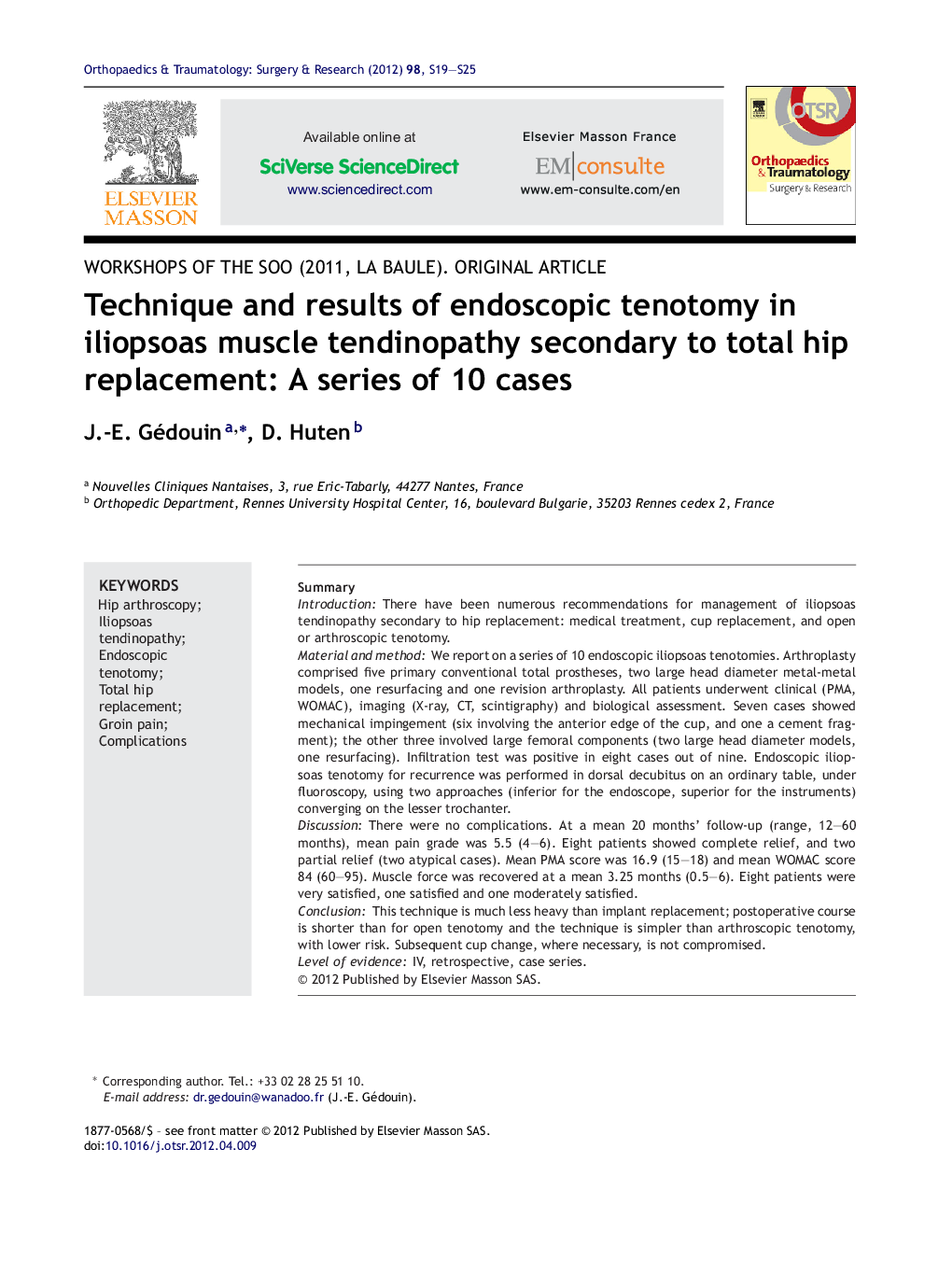| Article ID | Journal | Published Year | Pages | File Type |
|---|---|---|---|---|
| 4081888 | Orthopaedics & Traumatology: Surgery & Research | 2012 | 7 Pages |
SummaryIntroductionThere have been numerous recommendations for management of iliopsoas tendinopathy secondary to hip replacement: medical treatment, cup replacement, and open or arthroscopic tenotomy.Material and methodWe report on a series of 10 endoscopic iliopsoas tenotomies. Arthroplasty comprised five primary conventional total prostheses, two large head diameter metal-metal models, one resurfacing and one revision arthroplasty. All patients underwent clinical (PMA, WOMAC), imaging (X-ray, CT, scintigraphy) and biological assessment. Seven cases showed mechanical impingement (six involving the anterior edge of the cup, and one a cement fragment); the other three involved large femoral components (two large head diameter models, one resurfacing). Infiltration test was positive in eight cases out of nine. Endoscopic iliopsoas tenotomy for recurrence was performed in dorsal decubitus on an ordinary table, under fluoroscopy, using two approaches (inferior for the endoscope, superior for the instruments) converging on the lesser trochanter.DiscussionThere were no complications. At a mean 20 months’ follow-up (range, 12–60 months), mean pain grade was 5.5 (4–6). Eight patients showed complete relief, and two partial relief (two atypical cases). Mean PMA score was 16.9 (15–18) and mean WOMAC score 84 (60–95). Muscle force was recovered at a mean 3.25 months (0.5–6). Eight patients were very satisfied, one satisfied and one moderately satisfied.ConclusionThis technique is much less heavy than implant replacement; postoperative course is shorter than for open tenotomy and the technique is simpler than arthroscopic tenotomy, with lower risk. Subsequent cup change, where necessary, is not compromised.Level of evidenceIV, retrospective, case series.
